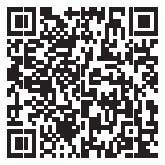Tic Disorder
OBJECTIVES
To discuss the clinical classification of tics.
To review the spectrum of clinical disorders associated with tics.
To briefly review the clinical characteristics and management of Tourette syndrome.
VIGNETTE
A 38-year-old man had throat clearing and blinking in childhood, evolving into head shaking and shoulder twitches in adulthood. He did not seek medical attention until about 10 years earlier because of social embarrassment. Being in crowds reliably increased the frequency of his movements. He had no head or shoulder twitches during sleep. Taking hot baths also reduced the intensity and frequency of his movements.
 |
Our patient had a long history of brief, intermittent, stereotyped, purposeless, and irregularly repetitive clonic movements consistent with a motor tic disorder. He also had a history of generalized anxiety disorder. The motor tics initially became noticeable in grade school with persistent throat clearing and blinking. In middle and high school, these symptoms worsened, and at the time of this consultation, they had evolved into rapid head shaking and shoulder shrugging. The throat clearing abated. He had no grunting or barking. He described the period before the tics as characterized by an initial buildup of tension, relieved transiently by the tics.
He worked night shifts at his job, but he preferred to work at home as he felt less anxious. Although the absence of other workers at night helped with his anxiety, the thought of pending or incomplete work made him extremely nervous. He also used to sit in the back of movie theaters and at church, as he felt embarrassed about his symptoms. He had neither ritualistic thoughts surrounding the tics nor intrusive, uncontrollable, or recurrent thoughts. He had no compulsive behaviors. Other than throat clearing, he never had phonic tics.
His anxiety symptoms included worrying constantly, having different thoughts about a large range of daily issues, problems with concentration, and feeling panicky and overwhelmed at times, sometimes in anticipation of his own movements. He had been placed on haloperidol, but this caused incoordination and thus was discontinued. He also received carbamazepine, baclofen, and valproic acid with no benefit. He had some modest control of the tics with clonazepam. Cranial computed tomography (CT) and electroencephalography (EEG) were normal.
Stay updated, free articles. Join our Telegram channel

Full access? Get Clinical Tree








